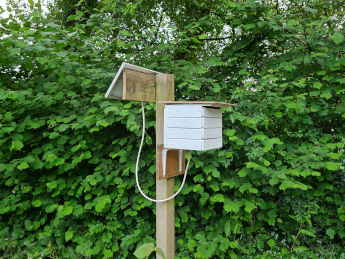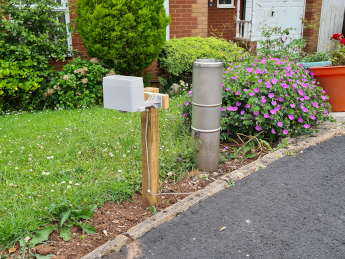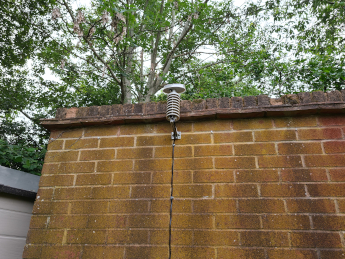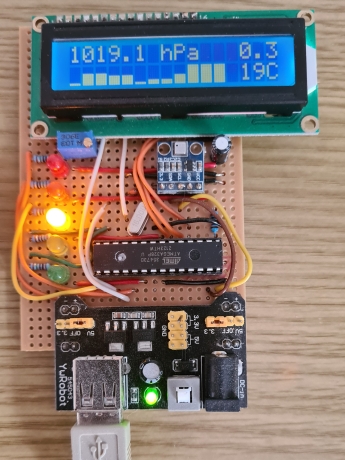Starlings Roost AWS, Cullompton, Devon
The AWS, currently running a Fine Offset WS3083 and powered by CumulusMX, has been here in various forms since mid-2016. This was mainly used to look at current conditions, since the equipment was not really exposed sufficiently to produce satisfactorily accurate readings, and the number of glitches combined with cumbersome editing of the text files/records generated by Cumulus made record keeping too labour-intensive and time-consuming.
Since January 2020 several improvements have been made, starting with the housing of the temperature/humidity sensor within a fan-aspirated homemade Stevenson Screen, and the establishment of a 5-inch check rain gauge to compare the tipping bucket rain gauge against. The COVID-19 pandemic and subsequent lockdowns in 2020 gave me time to develop a small website, and a number of tools to help me automate data quality control and make data editing/record keeping much more efficient. This has since expanded into Starlings Roost Weather.
RoostCam South was installed in May 2020, with RoostCam North then added in December 2020. In March 2021 I installed a Blake-Larsen sunshine sensor, and in Summer 2021 I finally mounted the anemometer on the 10m mast.
|
Anemometer, wind vane and sunshine sensor mounted on 10m mast Basic anemometer and wind vane mounted on top of a 16ft stainless steel pole, which itself is attached to the corner of the house giving it both clearance of the roof and surroundings, and a height of very close to 10m above ground. Despite this height, the anemometer is still a little sheltered, with tall trees in the vicinity. Sunshine sensor employed sits near the top of the main 12ft mast, facing due south. The sensor is a "Blake-Larsen", which gives very accurate sunshine duration from sunrise to sunset. Trees to the west reduce the measured sunshine totals by around 1 hour on totally clear days. See www.sunrecorder.net for more information about the Blake-Larsen sensor. |
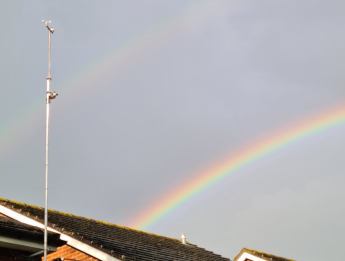
|
|
|
RoostCam North (left), and South (right) IP POE cameras connected to the internal network, providing both a live stream and static images which are automatically stitched together in a time-lapse movie every 24 hours. RoostCam North is an H.View 5MP security camera (HV-500G2), and RoostCam South is an IeGeek IP security camera. |

|
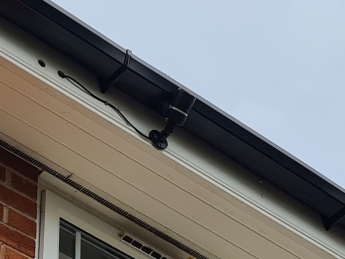
|
